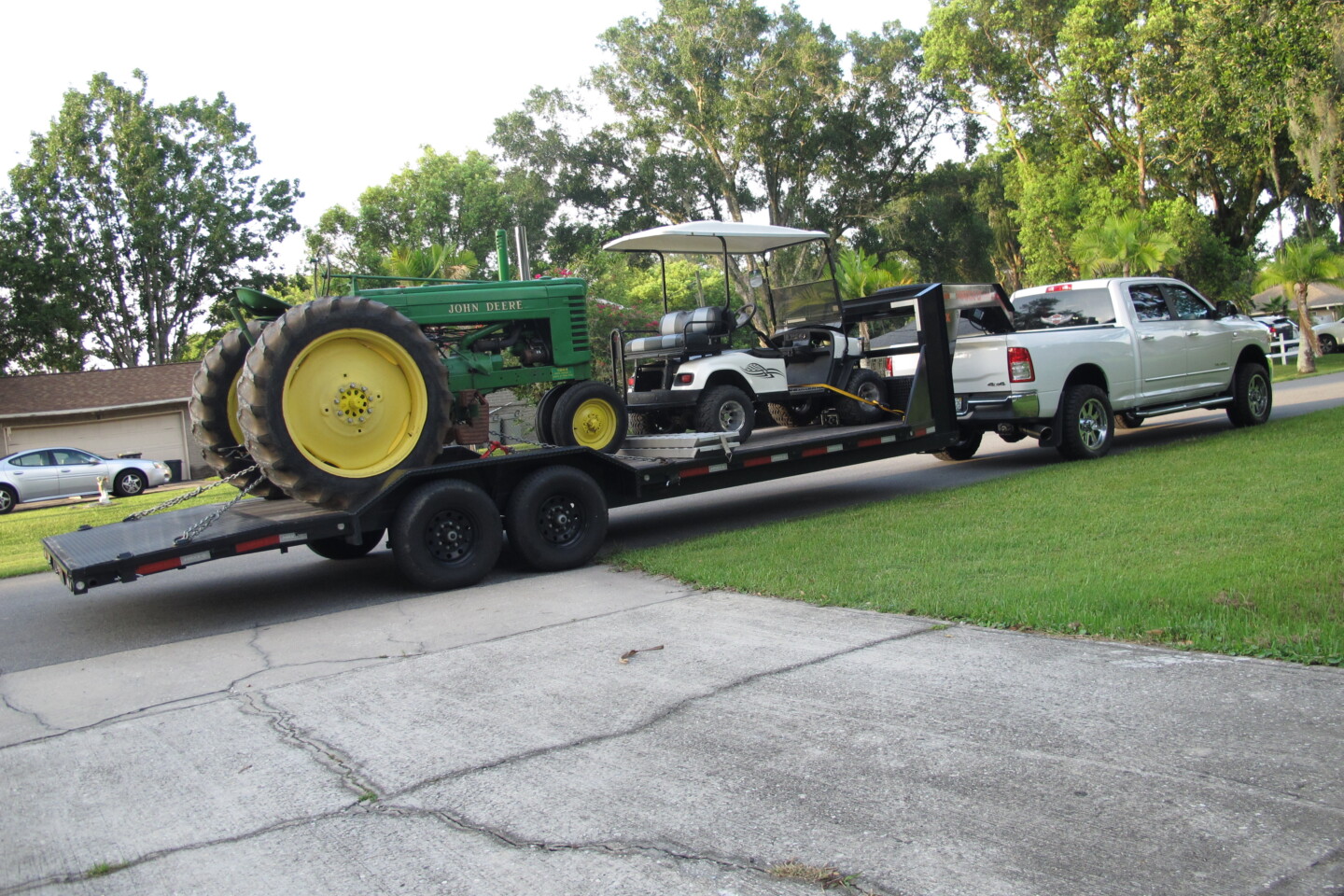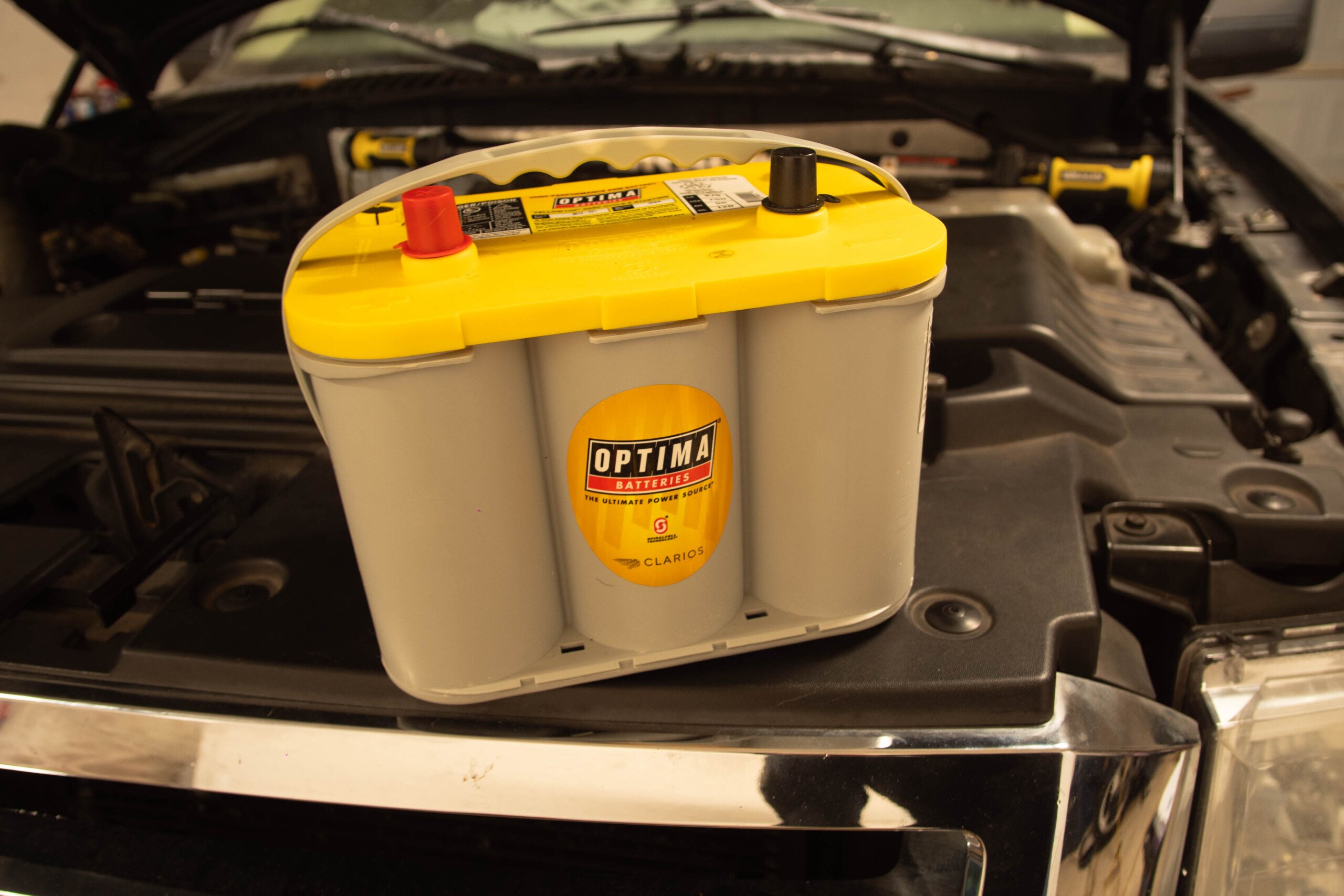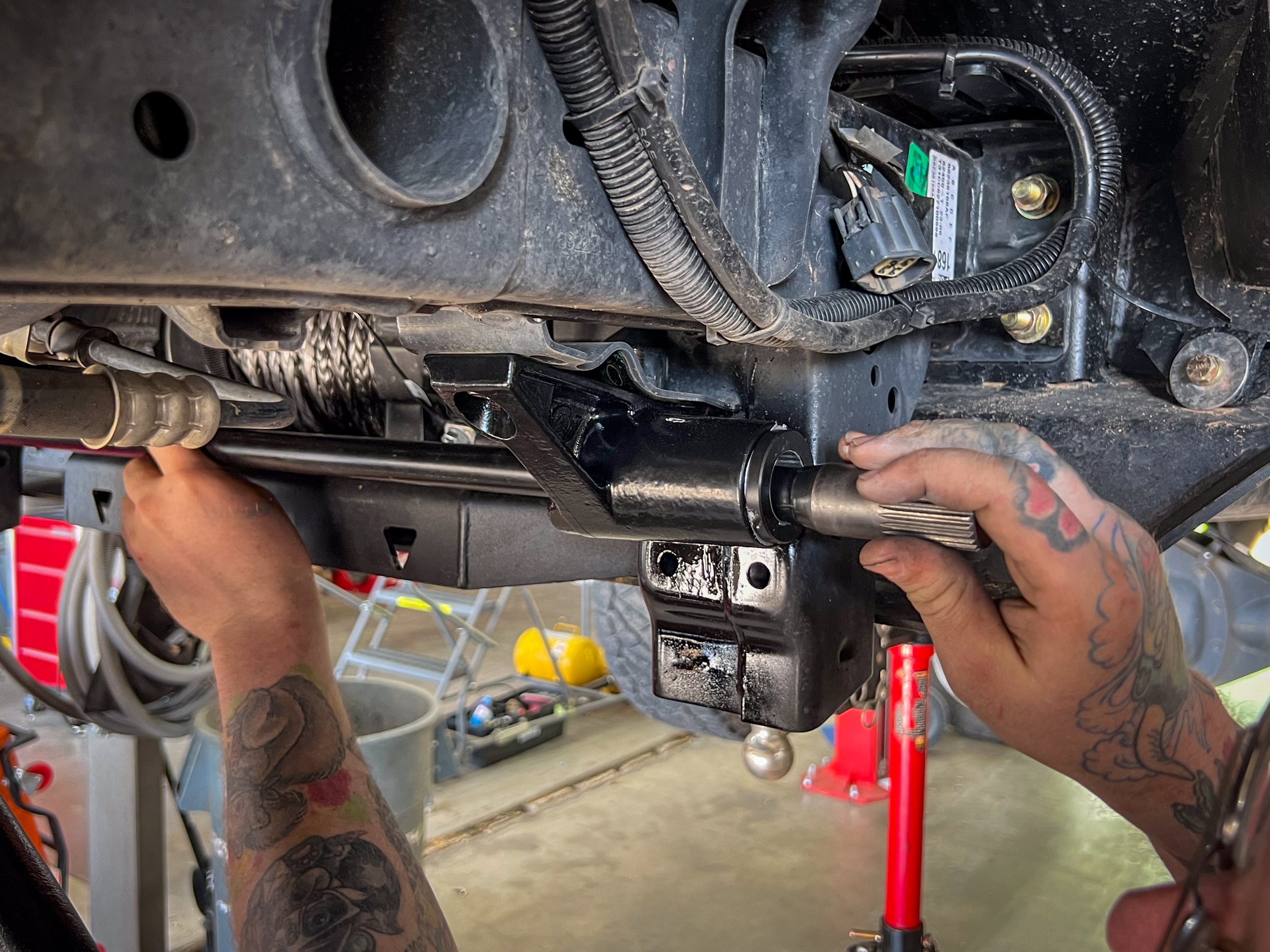When it comes to modifying our trucks, the first thing most truck owners consider is performance. That’s not a bad thing. We use our trucks to haul and tow things, and any way we can boost horsepower and torque, it’s a no-brainer. But how many truck owners give much thought to stopping? Let’s face it, we all worry about getting those 24,000 pounds moving, but eventually, you will need to stop. Brake pads are an important part of that.
Recently, I checked the brakes on Project WorkHorse and learned it was time to replace the pads. But, I also wondered if there were better options than traditional discount store replacements. I did a lot of internet searching to learn more about brake pad selection and landed on Hawk Performance.
The reason I chose Hawk? First, their products are made in the USA. Second, they have a reputation with enthusiasts of being one of the top braking companies, and although I am not diving into corners at high speed and needing to slow down for the apex, I do need brake pads that can safely stop a loaded truck and trailer. My only concern is, they have two different pads to fit WorkHorse, so which ones do I choose?
Decisions, Decisions…
When it comes to brake pad selection for a fifth-gen 2500 Ram, you have two options: Super Duty and LTS pads. The difference is all about pad material. For this testing, I decided to order both the Super Duty and the LTS pads and let you guys know what I learned, that way you can make an informed decision. But before we get into the new pads, we need to get some testing results with the OE brake pads.
The OE pads were not completely worn out but would need to be replaced soon. So, before I changed them, I was curious about the stopping distance. I hooked the gooseneck trailer to WorkHorse and loaded it with a 5,000-pound tractor and a 1,200-pound golf cart. The combined weight of the trailer and load came in at 10,300 pounds. Also, this test is for the brake pads, not the Cummins engine brake. So, I turned off the engine braking completely for each test run.
Brake Pads Tested
With the trailer hooked and loaded, I made my way to the test road. The test road is a three-mile-long road that is as flat as I can find, and at certain times of the day, is not frequented by other cars, I made sure that I had enough room to get to 60 mph and then come to a complete stop. My testing also required three “test passes” for each brake pad and then the “middle result” would be used as the final number. To get my numbers? I pulled out the trusty Dragy GPS Performance meter. The Dragy would give me repeatable results for each test pass.
First up were the OE pads. While these pads are suitable for stopping the truck, I know that better options are available. However, the pads work, they don’t squeal, and they do not leave an exorbitant amount of brake dust on the wheels. With baseline testing done, the OE pads brought the truck and trailer to a complete 60 mph to zero halt in 383.45 feet. It took 9.46 seconds to make the stop. Again, the exhaust brake was not utilized.

As you can see, the OE pads were not shot, but the Super Duty pads (installed) clearly have more “meat” on them.
Super Duty Brake Pads
With the baseline established, it was time to try a set of the Hawk brake pads. For the first test, I installed the Super Duty pads. Changing the pads is easy, and I am not going to get into the pad R&R process. The Super Duty pads are engineered for use in heavy-duty on/off-highway applications. They offer an extremely high coefficient of friction and fade resistance. These pads are recommended for professional fleets (greater than 1 ton) and light trucks towing excessive payloads. WorkHorse is only a 3/4-ton truck, but it does a lot of towing.
The Super Duty brakes were excellent at stopping the truck and trailer. These pictures show the amount of brake dust on the wheels after 30 days of driving.
With the new pads installed, I completed the bed-in process and before I tested the Super Duty pads, I drove the truck around without the trailer for roughly a month. I wanted to make sure the pads were settled in and used before I tested them. During this month I couldn’t tell if the pads were any better than the OE pads, as I was just subjecting them to everyday use — no loads or spirited driving.
What I did notice was the Super Duty pads do develop more brake dust on the wheels than the OE pads did. However, if they stop the truck and trailer at a significantly shorter distance, the small amount of brake dust will be of minimal concern. When it was time to test the Super Duty pads with the loaded trailer, I subjected them to the same testing as the OE pads and the results speak for themselves. With an average distance of 360.52 feet. The Super Duty pads are exceptionally better at bringing the truck and trailer to a stop than the OE pads. In short, 22.93 feet shorter. It only took 8.53 seconds to come to a complete halt.
Bedding In For Better Stopping
If your rotors do not need resurfacing, then contamination from the previous brake pads must be removed. To do this, sand the rotors with 130-grit sandpaper using moderate pressure. Use soap and water to clean the rotor surface after sanding. Rotors should be free and clear of oil, grease, and brake fluid.
When your truck is reassembled and ready to drive, make six to ten stops from approximately 30 to 35 mph applying moderate pressure. When that is done, then make an additional two or three hard stops from approximately 40 to 45 mph. When that is complete and your brakes have had sufficient time to cool, they are now ready for use and can be driven normally.
The Final Test With The LTS Brake Pads
As good as the Super Duty pads did, I was anxious to find out how the LTS pads would fair. According to Hawk Performance, the LTS pads deliver a strong and balanced initial bite, whether hot or cold. Brake fade is a real concern when towing a trailer, and the LTS pads offer much greater fade resistance than the OE pads. Finally, the Ferro-Carbon friction material offers what Hawk considers a low dust output and excellent pad and rotor life. But, will they perform as well as the Super Duty pads?

As you can see in the above graphs, the LTS pads offer lower rotor wear, less dust, and less noise than the Super Duty pads. That does not mean the Super Duty pads are less effective. On the contrary, it just means the Super Duty pads are better suited for commercial fleets than on a decked-out daily driver with nice wheels.
Just like with the Super Duty pads, after the installation of the LTS pads, I completed the bed-in process and then drove the truck around without the trailer for roughly one month. Much like with the Super Duty pads, during this timeframe, I couldn’t tell if the pads were any better than the OE pads, again, I was only subjecting them to commuter-type driving. One deviation between the Super Duty and LTS pads was brake dust on the wheels. The LTS left noticeably less brake dust on the wheels. I initially thought this might mean they don’t work as well as the Super Duty pads, but the test shows otherwise.

The LTS pads stopped the truck and trailer at nearly the same distance as the Super Duty pads, but they developed less brake dust on the wheels.
When testing of the LTS brake pads was complete, it was clear the Super Duty and LTS pads are very comparable in the stopping department. The Super Duty brake pads did present a slight betterment of the LTS pads as the LTS pads brought the truck and trailer to a stop in 362.22 feet and 9.10 seconds. Keep in mind, the Super Duty brakes are designed for heavier-duty commercial use. I cannot with any certainty claim this small difference is due to pad material or a slight variance in my testing. Either way, the Hawk brake pads have proven themselves to definitely be an upgrade.
The next time your truck is ready for brakes, please consider this test as bringing your loaded truck and trailer to a safe stop could be the difference between you being able to continue driving or needing a tow truck because your OE pads didn’t handle the task at hand in the distance required.







